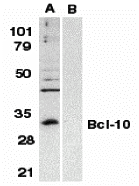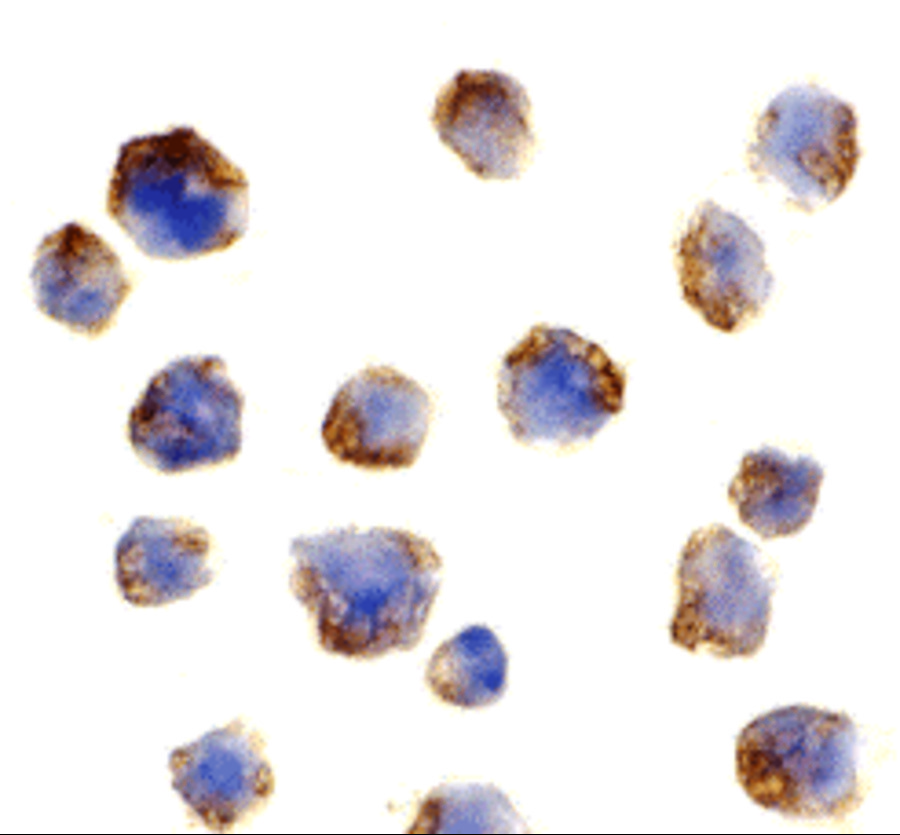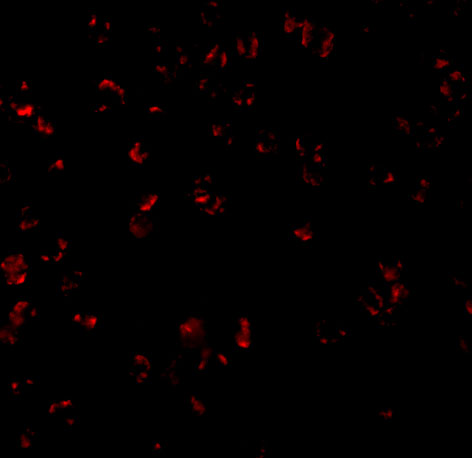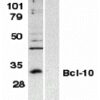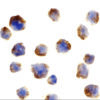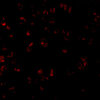Anti-Bcl10 (NT) Antibody (2161)
$445.00
SKU: 2161
Categories: Antibody Products, Apoptosis Antibodies, Products
Overview
Product Name Anti-Bcl10 (NT) Antibody (2161)
Description Anti-Bcl10 (NT) Rabbit Polyclonal Antibody
Target Bcl10 (NT)
Species Reactivity Human
Applications ELISA,WB,ICC,IF
Host Rabbit
Clonality Polyclonal
Isotype IgG
Immunogen Peptide corresponding to aa 5-19 of human Bcl10.
Properties
Form Liquid
Concentration Lot Specific
Formulation PBS, pH 7.4.
Buffer Formulation Phosphate Buffered Saline
Buffer pH pH 7.4
Format Purified
Purification Purified by peptide immuno-affinity chromatography
Specificity Information
Specificity This antibody recognizes human Bcl10 (31kDa).
Target Name B-cell lymphoma/leukemia 10
Target ID Bcl10 (NT)
Uniprot ID O95999
Alternative Names B-cell CLL/lymphoma 10, Bcl-10, CARD-containing molecule enhancing NF-κ-B, CARD-like apoptotic protein, hCLAP, CED-3/ICH-1 prodomain homologous E10-like regulator, CIPER, Cellular homolog of vCARMEN, cCARMEN, Cellular-E10, c-E10, Mammalian CARD-containing adapter molecule E10, mE10
Gene Name BCL10
Gene ID 8915
Accession Number NP_003912
Sequence Location Cytoplasm, perinuclear region, Membrane raft
Biological Function Plays a key role in both adaptive and innate immune signaling by bridging CARD domain-containing proteins to immune activation (PubMed:10187770, PubMed:10364242, PubMed:10400625, PubMed:25365219, PubMed:24074955). Acts by channeling adaptive and innate immune signaling downstream of CARD domain-containing proteins CARD9, CARD11 and CARD14 to activate NF-kappa-B and MAP kinase p38 (MAPK11, MAPK12, MAPK13 and/or MAPK14) pathways which stimulate expression of genes encoding pro-inflammatory cytokines and chemokines (PubMed:24074955). Recruited by activated CARD domain-containing proteins: homooligomerized CARD domain-containing proteins form a nucleating helical template that recruits BCL10 via CARD-CARD interaction, thereby promoting polymerization of BCL10, subsequent recruitment of MALT1 and formation of a CBM complex (PubMed:24074955). This leads to activation of NF-kappa-B and MAP kinase p38 (MAPK11, MAPK12, MAPK13 and/or MAPK14) pathways which stimulate expression of genes encoding pro-inflammatory cytokines and chemokines (PubMed:18287044, PubMed:27777308, PubMed:24074955). Activated by CARD9 downstream of C-type lectin receptors; CARD9-mediated signals are essential for antifungal immunity (PubMed:26488816). Activated by CARD11 downstream of T-cell receptor (TCR) and B-cell receptor (BCR) (PubMed:18264101, PubMed:18287044, PubMed:27777308, PubMed:24074955). Promotes apoptosis, pro-caspase-9 maturation and activation of NF-kappa-B via NIK and IKK (PubMed:10187815). {PubMed:10187770, PubMed:10187815, PubMed:10364242, PubMed:10400625, PubMed:18264101, PubMed:18287044, PubMed:24074955, PubMed:25365219, PubMed:26488816, PubMed:27777308}.
Research Areas Apoptosis
Background A novel CARD containing protein was recently identified and designated Bcl10, CIPER, mE10, CARMEN, and CLAP. Bcl10 is a cellular homolog of the equine herpesvirus-2 E-10 gene. Overexpression of Bcl10 induces JNK, p38, and NF- B activation. Bcl10 interacts with caspase- 9, enhances pro-caspase-9 processing, and induces apoptosis through caspase-9 activation. Bcl10 exhibits a variety of mutations in MALT lymphoma and in B and T cell lymphomas indicating that it may be commonly involved in the pathogenesis of human tumors. Bcl10 is expressed in many human and murine tissues and cell lines.
Application Images




Description Western blot analysis of Bcl-10 in Raji whole cell lysate in the absence (A) or presence (B) of peptide (2161P) with Bcl-10 antibody at 1:500 dilution.

Description Immunocytochemistry of Bcl10 in Raji cells with Bcl10 antibody at 1 ug/mL.

Description Immunofluorescence of Bcl-10 in Raji cells with Bcl-10 antibody at 10 ug/mL.
Handling
Storage This antibody is stable for at least one (1) year at -20°C. Avoid multiple freeze-thaw cycles.
Dilution Instructions Dilute in PBS or medium which is identical to that used in the assay system.
Application Instructions Immunoblotting: use at 1ug/mL.
Immunocytochemistry: use at 1ug/mL.
These are recommended concentrations.
Enduser should determine optimal concentration for their application.
Positive control: Whole cell lysate of Raji cells.
Immunocytochemistry: use at 1ug/mL.
These are recommended concentrations.
Enduser should determine optimal concentration for their application.
Positive control: Whole cell lysate of Raji cells.
References & Data Sheet
Data Sheet  Download PDF Data Sheet
Download PDF Data Sheet
 Download PDF Data Sheet
Download PDF Data Sheet

